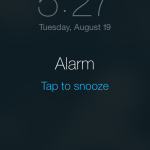In the world of personal development, many schools teach that your thoughts create your feelings. Change your thoughts and you change your feelings. You can feel whatever you want. Happiness, joy, courage. All it takes is making sure that you are properly managing your thoughts. As leaders, if we think this, we may approach our teams with the mindset that if we can only change our team’s thoughts, we too can manage their feelings. Except this doesn’t really work. In fact, despite our best efforts, we struggle to manage our teams this way.
But if you can change your relationship to thoughts, feelings, and meaning you can learn to be the kind of leader who knows how to create art with your team.
How thoughts and feelings really work
If you know anything about neuroscience or the lizard brain, you know that thoughts actually almost never precede feelings. Our amygdala, a sort of gatekeeper in the brain, gets some data from our senses and then sends it to our body and the rest of our brain.
If it detects a pattern of data it’s seen before and it’s related to a threat, it will send signals to the body to prepare to run, fight, or play dead. Moments later (a long time in brain-land) the prefrontal cortex also gets the data. The prefrontal cortex begins to interpret the data and do something really interesting. It makes meaning of the data. Really, it’s testing different meanings to see what plays.
If we’re walking through the woods and see a coiled object in the path, our amygdala screams “PATTERN OF SNAKE!!!” and sends this data to the body. We freeze. Our heart rate increases. We look closer. And our brain is processing: “Okay, alrighty now. Is it moving? Okay, not moving. What kind of snakes are common for this area? What else could it be?”
The brain is testing these complex mental models against its data stores to see how it could use our meaning-making abilities to help us get out of the situation.
When people who teach “thoughts create feelings” explain this tale, they would say: “See, the thought ‘SNAKE’ created the feeling ‘FEAR.’”
But that’s not true. It kind of seems true, but it isn’t.
The truth is our amygdala saw a pattern it’s been trained to think is a threat, our body generated fear to heighten our sense and THEN our brain thought SNAKE. Except we aren’t aware of any of this until we hear SNAKE in our heads and so we think, “the thought caused the feeling.”
But it’s actually the other way around. The sensation caused the feeling, and those together created the thought. From there the system DOES loop back on itself. As our minds play out all the scenarios—rattler, king cobra, copperhead, coral snake, radioactive, etc., etc.—we continue to have fear responses to these ideas. Even after we realize that what’s in the path is a rope, our bodies take time to calm down. To let go of the fear. Because the fear is not psychological, it’s biological.
Why does this matter for teams?
The simple answer: If members of your team are reacting with a certain set of thoughts or actions you don’t get, DON’T START TRYING TO CHANGE THE THOUGHTS!
It’s a little like trying to convince a kid that there are no monsters under their bed. Logically, you know there are no monsters, but to them the monsters are totally real, and forcing them to get into bed is basically torture.
Yet this is what executives and leaders I’ve met with usually do. They try to explain why their thoughts are better than their team’s thoughts. But it doesn’t work. Because you haven’t unearthed the pattern. You’re just teaching people to do a different thing when they see a snake.
So what should you or could you do differently?
Slow down and understand their world
In their world, their choices, behaviors, and beliefs all make PERFECT SENSE. They see a snake. To you: ropes all day, but to them: snakes. And until you can understand that they are seeing a snake or at least that they are seeing something they perceive as dangerous, you’ll never be able to lead them effectively. Because you’ll be leading them from a view of the world they can’t see.
This is why one of the most fundamental things I work on with my clients is how to stop and ask, “Why?” Why are they doing this? Why does the client want it this way? Why is this team member resisting? What’s really going on here?
Because when we understand why, even if it’s just the faint outline of why, we can influence people from a level deeper than simple moment-to-moment thought.
And while it takes practice to learn to exchange yourself for others—to see from their eyes, and then offer guidance, support, empathy, and enrollment from that place—doing so will not only make you a more effective leader, it will enable you to deeply understand yourself and everyone on your team—with a definition and clarity most leaders only dream of.


